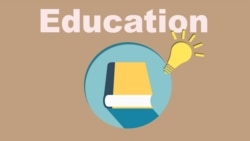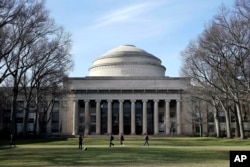Some top universities in the United States are reporting drops in the number of Black students in their incoming classes. At other colleges, including Princeton University and Yale University, the share of Black students changed little.
This fall’s class is the first admitted since a Supreme Court ruling barred affirmative action in higher education.
Several schools have seen changes in numbers of Asian, Hispanic and Native American students, but trends are still unclear. Experts and colleges say it will take years to measure the full effect of the ruling.
The end of affirmative action is not the only possible reason for the changing numbers. Some colleges are changing requirements, making test results more important. Earlier this year, there was a problem with the federal government's college financial aid process.
On September 5, the University of North Carolina at Chapel Hill (UNC) reported drops in enrollment among Black, Hispanic and Native American students in its incoming class. It was one of the colleges at the center of the Supreme Court case.
The population of Black students dropped nearly 3 percentage points this fall, to 7.8 percent. Hispanic student enrollment fell from 10.8 percent to 10.1 percent, while the incoming Native American population fell half a percentage point to 1.1 percent, according to the university. The incoming Asian student population rose 1 percentage point to 25.8 percent. The share of white students, at 63.8 percent, hardly changed.
Rachelle Feldman is UNC's vice provost for enrollment. She said the delay in the student aid process was another possible influence on the enrollment numbers.
"We are committed to following the new law,” Feldman said. She also said the school administration is committed to making sure all North Carolina’s students know that they are welcome at UNC and can succeed there.
Other universities reported sharp drops in Black student enrollment. The Massachusetts Institute of Technology (MIT) said the percentage of incoming Black students fell from 15 percent to 5 percent. Another Massachusetts school, Amherst College, reported the percentage fell from 11 percent to 3 percent.
At Tufts University in Massachusetts, the drop in the share of Black students was smaller, from 7.3 percent to 4.7 percent. At Yale, the University of Virginia and Princeton, the change year-over-year was less than a percentage point.
Changes in enrollment for other demographic groups were more mixed. At MIT, for example, the percentage of Asian students increased from 40 percent to 47 percent. However, its Hispanic and Latino percentage dropped from 16 percent to 11 percent. And MIT’s percentage of white students stayed about the same.
But at Yale, the percentage of Asian students fell from 30 percent to 24 percent. White students at Yale went from 42 percent of the class to 46 percent. Hispanic and Latino students saw an increased representation of 1 percentage point.
Colleges have started looking for other ways to preserve the diversity they say is critical to university life.
JT Duck is head of admissions at Tufts University in Massachusetts. He said the school would work with community organizations to reach underrepresented, low-income students and students whose parents did not graduate from college. He suggested that people not worry too much about year-to-year changes in enrollment.
At UNC, vice provost Feldman said the university wants to make sure "anyone from any background knows they can earn their way here."
Katharine Meyer works at the Brookings Institution. She said it is hard to tell which policy change is having a greater effect. But so far, she said, the drops in underrepresented minority students are smaller than in previous cases. California passed a ban on affirmative action in 1995 and Michigan did so in 2014. But since those bans, Meyer said, colleges have developed more effective, non-race-based ways of recruiting and enrolling a diverse class.
I’m Jill Robbins.
Annie Ma and Makiya Seminera reported this story for the Associated Press. Jill Robbins adapted it for Learning English.
______________________________________________
Words in This Story
affirmative action – n. the practice of improving the educational and job opportunities of members of groups that have not been treated fairly in the past because of their race, sex, or the like
enroll – v. to take (someone) as a member or participant
committed – adj. willing to give your time, energy, and the like to something
diversity – n. the state of having people who are different races or who have different cultures in a group or organization
recruit – v. to find suitable people and get them to join a company, an organization, the armed forces, et
What do you think of this story? Write to us in the Comments Section.












Forum